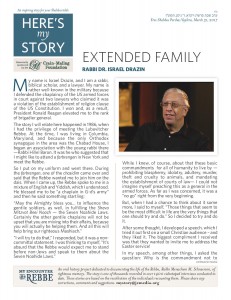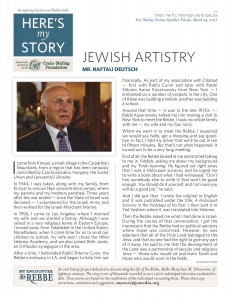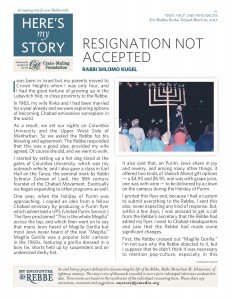Extended Family
My name is Israel Drazin, and I am a rabbi, biblical scholar, and a lawyer. My name is rather well-known in the military because I defended the chaplaincy of the US armed forces in court against two lawyers who claimed it was a violation of the establishment of religion clause of the US Constitution. I won and, as a result, President Ronald Reagan elevated me to the rank of brigadier general.
The story I will relate here happened in 1986, when I had the privilege of meeting the Lubavitcher Rebbe. At the time, I was living in Columbia, Maryland, and because the only Orthodox synagogue in the area was the Chabad House, I began an association with the young rabbi there – Rabbi Hillel Baron. It was he who suggested that I might like to attend a farbrengen in New York and meet the Rebbe.
So I put on my uniform and went there. During the farbrengen, one of the chasidim came over and said that the Rebbe wanted me to join him on the dais. When I came up, the Rebbe spoke to me in a mixture of English and Yiddish, which I understood. He blessed me to be “a chaplain in God’s army” and then he said something startling:
“May the Almighty bless you … to influence the gentile soldiers, as well, in fulfilling the Sheva Mitzvot Bnei Noach – the Seven Noahide Laws. Certainly the other gentile chaplains will not be upset that you are mixing into their affairs, because you will actually be helping them. And all this will help bring our righteous Mashiach.”
“I will try to do that,” I responded, but it was a non-committal statement. I was thinking to myself, “It’s absurd that the Rebbe would expect me to stand before non-Jews and speak to them about the Seven Noahide Laws.”
While I knew, of course, about that these basic commandments for all of humanity to live by – prohibiting blasphemy, idolatry, adultery, murder, theft and cruelty to animals, and mandating the establishment of courts of law – I could not imagine myself preaching this as a general in the armed forces. As far as I was concerned, it was a “no go” right from the very beginning.
But, when I had a chance to think about it some more, I said to myself, “Those things that seem to be the most difficult in life are the very things that one should try and do.” So I decided to try and do it.
After some thought, I developed a speech, which I tried it out first on a small Christian audience – and they liked it. The biggest compliment I received was that they wanted to invite me to address the Easter service. (more…)







